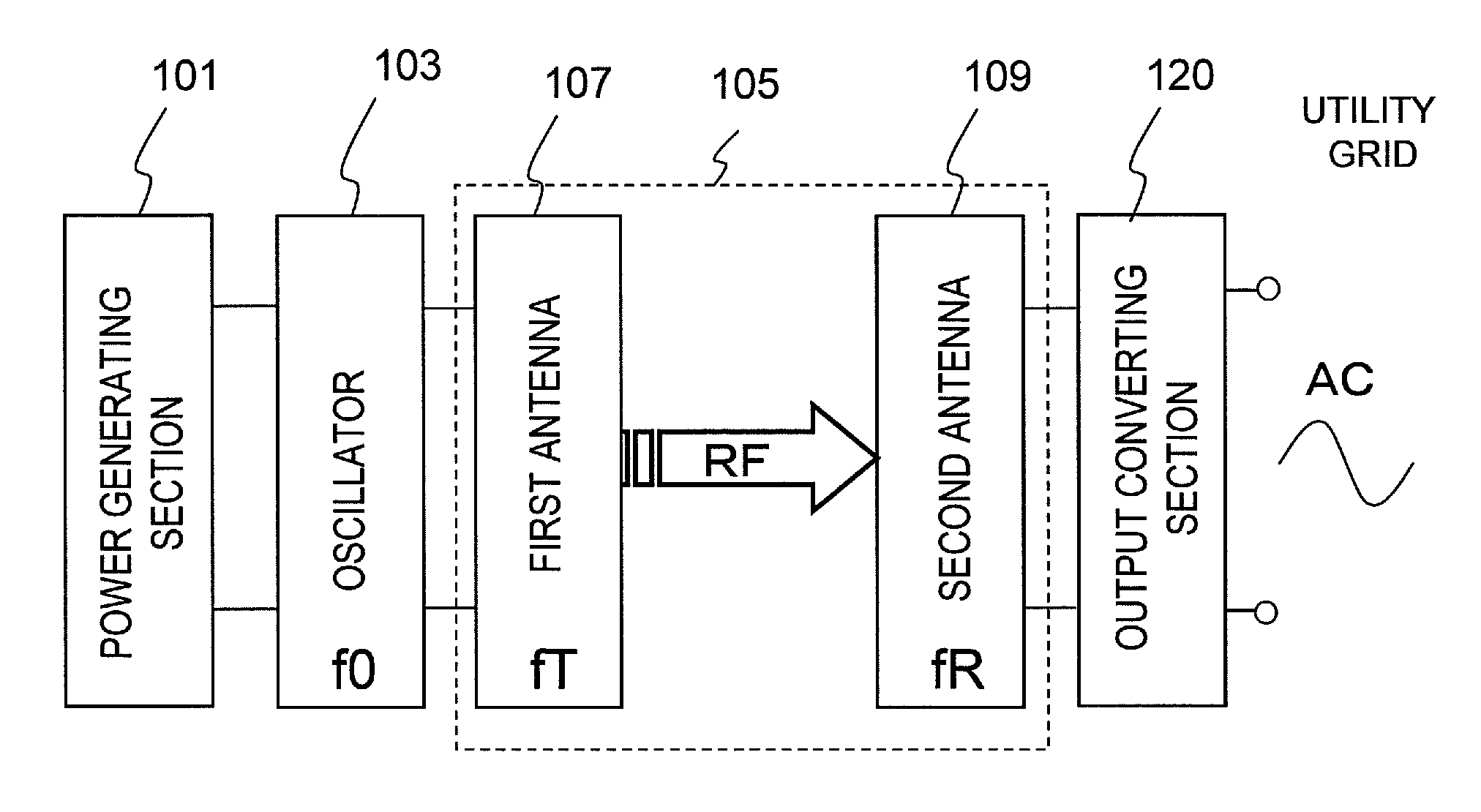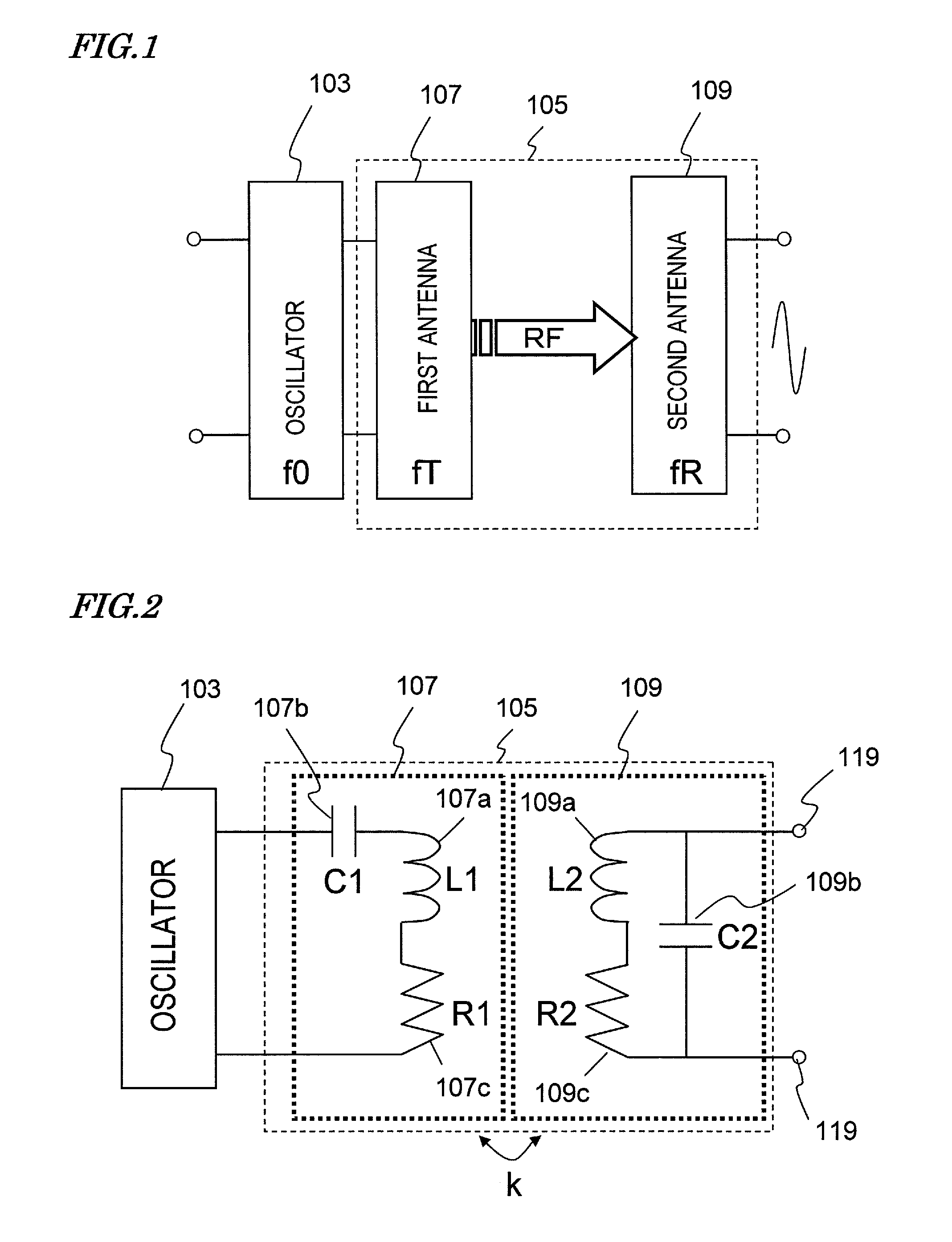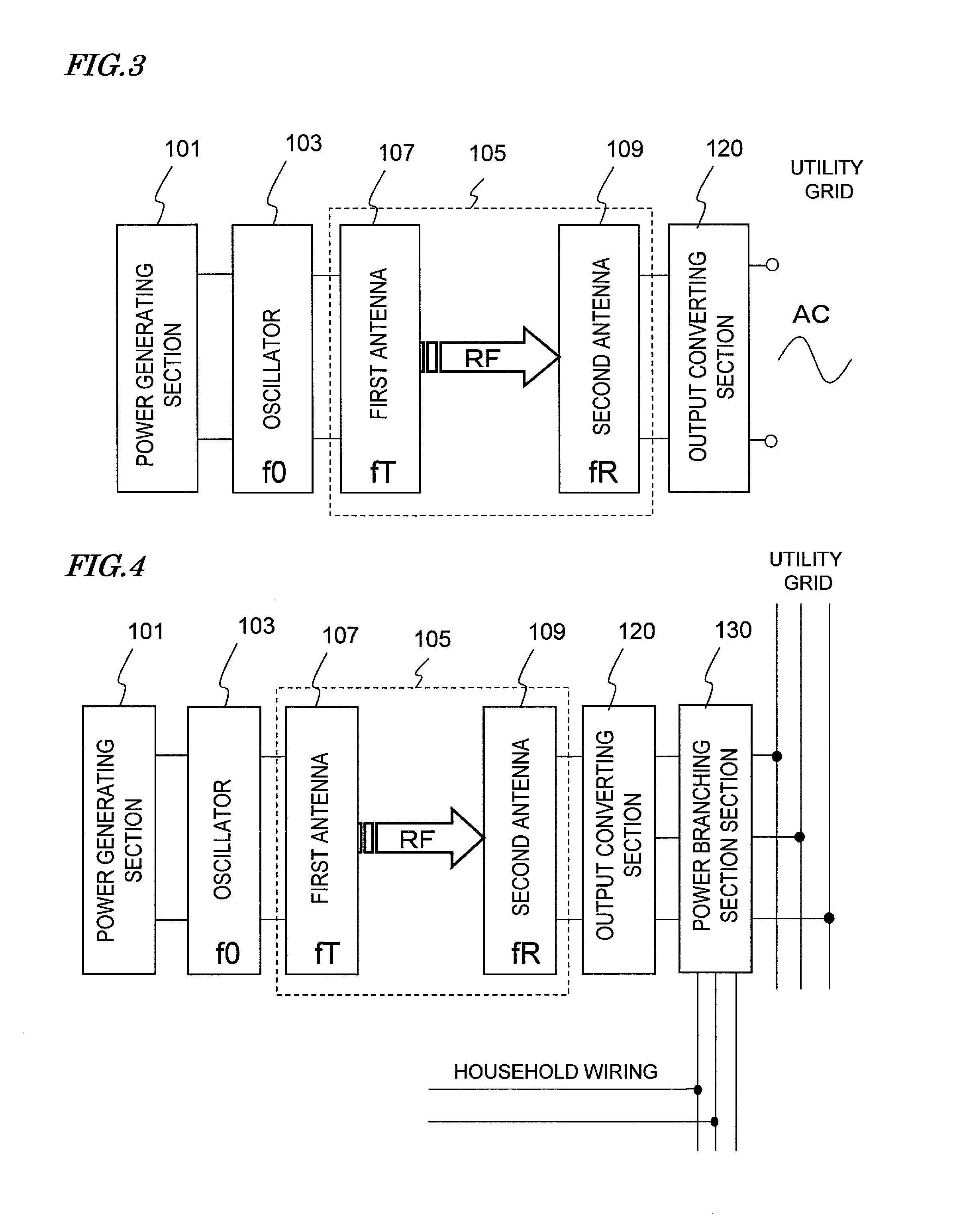Power generator and power generation system
- Summary
- Abstract
- Description
- Claims
- Application Information
AI Technical Summary
Benefits of technology
Problems solved by technology
Method used
Image
Examples
embodiment 1
[0067]First of all, a First Specific Preferred Embodiment of a power generator according to the present invention will be described with reference to FIGS. 5 and 6. Specifically, FIG. 5 is a perspective view schematically illustrating the first preferred embodiment of the present invention and FIG. 6 is an equivalent circuit diagram of the wireless transmission section 105 shown in FIG. 5. In FIGS. 5 and 6, any component having substantially the same function as its counterpart shown in FIGS. 1 and 2 is identified by that counterpart's reference numeral.
[0068]As shown in FIG. 5, the power generator of this preferred embodiment includes a power generating section 101, an oscillator 103, a wireless transmission section 105 and an output converting section 120, which are connected together in series.
[0069]In this preferred embodiment, the power generating section 101 includes a number of solar cells (which will be sometimes simply referred to herein as “cells”) that are connected toget...
embodiment 2
[0140]Hereinafter, a preferred embodiment of a power generation system according to the present invention will be described with reference to FIG. 14A, which is a block diagram illustrating a power generation system as a second specific preferred embodiment of the present invention. In FIG. 14A, any component having substantially the same function as its counterpart of the preferred embodiments described above is identified by that counterpart's reference numeral and the description thereof will be omitted herein to avoid redundancies.
[0141]The power generation system shown in FIG. 14A includes a number of power generating and voltage increasing sections 131a, 131b, . . . and 131n that are connected in parallel with each other. In this preferred embodiment, each of these power generating and voltage increasing sections 131a, 131b, . . . and 131n has the same configuration as a portion of the power generator of the first preferred embodiment that covers the range of the power generat...
example 1
[0152]Hereinafter, a first specific example of the present invention will be described.
[0153]First of all, nine single-crystal silicon based solar power generating elements (i.e., solar cells), of which the photosensitive plane had a square surface with a size of 12 cm each side, were connected together in series to obtain a solar power generating section with an output voltage of 4.5 V, an output current of 1 A, and an output impedance of 4.5Ω. And an oscillator with an output frequency of 3 MHz and an output impedance Zoc of 5Ω was connected to the output terminal of that solar power generating section. The oscillator, which was implemented as a class F amplifier, achieved an efficiency of 95%. In this first specific example, the oscillator has a voltage step-up ratio Vtr of 1.05.
[0154]The first and second antennas were designed so as to have a resonant frequency of 3 MHz, which was equal to the output frequency of the oscillator. Specifically, the first antenna was fabricated by ...
PUM
 Login to View More
Login to View More Abstract
Description
Claims
Application Information
 Login to View More
Login to View More - R&D
- Intellectual Property
- Life Sciences
- Materials
- Tech Scout
- Unparalleled Data Quality
- Higher Quality Content
- 60% Fewer Hallucinations
Browse by: Latest US Patents, China's latest patents, Technical Efficacy Thesaurus, Application Domain, Technology Topic, Popular Technical Reports.
© 2025 PatSnap. All rights reserved.Legal|Privacy policy|Modern Slavery Act Transparency Statement|Sitemap|About US| Contact US: help@patsnap.com



